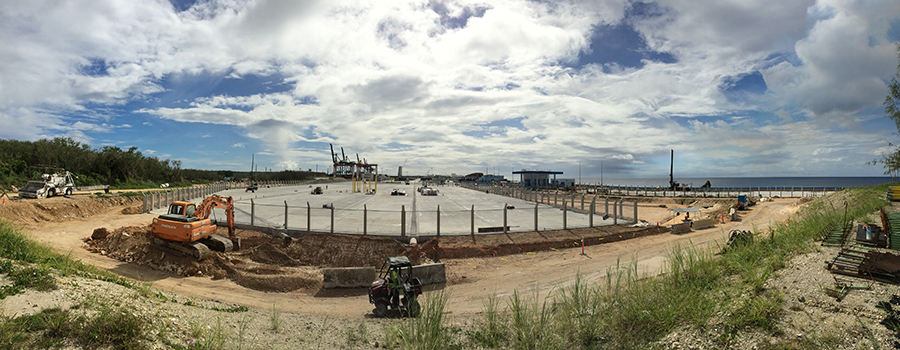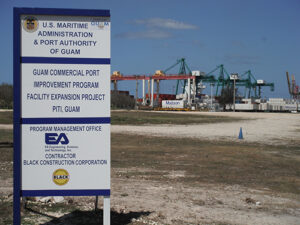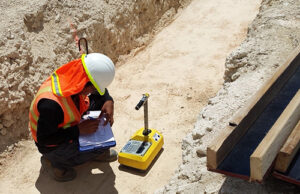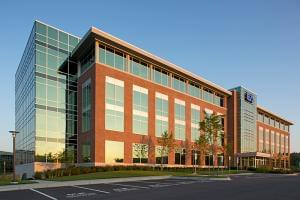Client: U.S. Department of Transportation Maritime Administration (MARAD)
Location: Piti, Guam
EA served as the Guam Commercial Port Improvement (GCPI) Program Manager. In this capacity, our team provided technical engineering expertise for port planning, design, construction, and construction management services for the modernization and expansion of the Jose D. Leon Guerrero Port facility. Responsibilities included environmental investigations and permitting (NEPA, NPDES, hazardous materials), public outreach activities, and coordination with multiple stakeholders involved in the military backup including the multiple local government agencies and authorities, NAVFAC Joint Guam Program Office, the Civilian Military Coordination Council, port tenants and commercial customers, and the general public.

EA worked closely with MARAD and PAG to provide technical management, staff augmentation support, and program management services. A step-by-step program management system implementation process was developed to encompass the entire program life-cycle requirements, fully integrate budget and financial information, provide accurate data in real-time, afford ease of maintenance and updates, and produce custom reports with visual graphics.
Program task orders as part of the commercial port improvement project included design, wharf structural and geotechnical assessments, environmental services, plans, specifications, cost estimates, port construction oversight, and execution.
 Environmental Assessment to determine environmental impacts to resources surrounding the site associated with the Port Modernization Program.
Environmental Assessment to determine environmental impacts to resources surrounding the site associated with the Port Modernization Program.- Resource Permitting under the Coastal Zone Management Act, CWA (Sections 401, 402, and 404), Rivers and Harbors Act (Section 10), National Historic Preservation Act, and the Archaeological Resources Protection Act.
- Wharf Repair Project to assess structural integrity including risk of earthquakes. Geotechnical engineering services and seismic risk analysis.
- Environmental Investigation to provide selected contractors with quantitative information to more accurately anticipate contaminated construction materials.
- Container Freight Station Building Modifications Project to build out office space including modifications to existing means of ingress and egress, new customs area, and installation of new essential offices, bathrooms, and lounges with natural daylighting and efficient HVAC systems.
- Selected Demolition and Break Bulk Yard Modifications including pavement repairs.
- Facility Expansion Project involving demolition of selected structures, construction of a new container yard, new terminal gate, new load center, and associated electrical distribution, high mast lighting, stormwater sewer systems, new domestic water and fire distribution, and an equipment wash rack facility.

Sustainable practices were incorporated into the $54 million modernization where possible. Examples include:
- Completing a life-cycle cost-benefit analysis of energy-efficient lighting and installing light-emitting diode (LED) streetlights throughout parking and roadway areas
- Recycling rebar and utilizing concrete rubble from warehouse demolition for beneficial reuse as non-structural fill across the project site
- Providing 1,500 kilo-volt-ampere (kVA) backup power generation to ensure operational resiliency for the port during anticipated increased storm and typhoon magnitude and frequency as a result of climate change and sea level rise
- Building a 280,000-gallon water storage tank and pump station to provide additional fire-protection capacity and serve as emergency fire flow during disruption from earthquakes and typhoons
- Improving stormwater systems to include oil/water separators on outfalls as well as low impact development including wet pond storage and bioswale treatment of all new impervious surfaces constructed as part of the commercial port improvement and modernization project.
